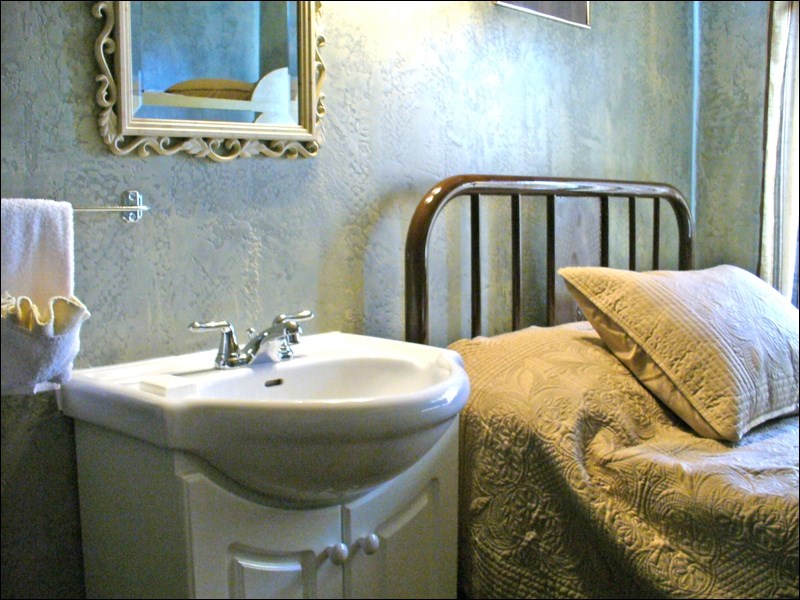While some old hotels in small-town Saskatchewan still have a sink in the room and bathroom down the hall, they have come a long way from the days when a “thunder mug” was placed under the bed. Before indoor plumbing was installed, hotel rooms were equipped with chamber pots – wide-mouthed vessels used by the room’s occupants as a toilet during the middle of the night. The container was then covered with a lid or cloth and slid under the bed until the chambermaid retrieved it in the morning. People used to joke that these were baseball hotels – “pitcher” on the dresser, “catcher” under the bed.
Tony Thibaudeau explains how the sanitation system worked at the Macklin Hotel in Prairie Views from Eye Hill: “In those days the hotels provided a large wash bowl and a jug of water in each room and a matching chamber pot under the bed, and on each floor there was a sanitary toilet. The chamber maid would change the beds, clean up the rooms, empty her scrub water and the contents of the refuse containers into a metal chute that was attached to the fire escape at the back of the hotel.” The barrel at the bottom of the chute was then bailed out with a pail and the contents disposed of “in a covered pool down the lane.”
During the 1930s, the Avenue Hotel in Nipawin had 16 guest rooms, a dining room, kitchen, laundry room, electricity, a wood furnace – and no running water. Instead, there was a cistern pump in the kitchen. Every day, water was heated on the kitchen wood stove and carried upstairs. Guests were given a pitcher of hot water with their wake-up call (a loud knock on the door) which they then used to fill a porcelain wash bowl sitting on a wash stand. Guests were also supplied with soap, towels and a pitcher filled with cold water.
These primitive conditions continued well into the 1940s and into the 1950s at some small-town Saskatchewan hotels. “It is not so many years ago,” the Wilkie local history book states, “that you might catch the hotel housekeeper emptying ‘pots’ over the fire escape on the second floor.” In 1948, Mr. and Mrs. Sydney Roitman completely renovated the interior of the Wilkie Hotel. The most modern touches of all were newly installed bathrooms, hot and cold running water and a septic tank.
In his book, To Get the Lights; A Memoir about Rural Electrification in Saskatchewan (2006), Dave Anderson recalls that life on the road in the early 1950s without running water in hotel rooms was “a hardship.” “At day’s end it was impossible to get refreshed with a washcloth in the wash basin with a quart of two of cold water from a pitcher in which often floated a dead fly, moth or wayward ant,” he writes. “So, the communal tub at the end of the hall, if there was one, shared with 20 or so other guests, was reluctantly used.”



